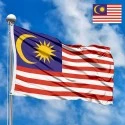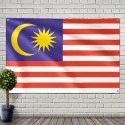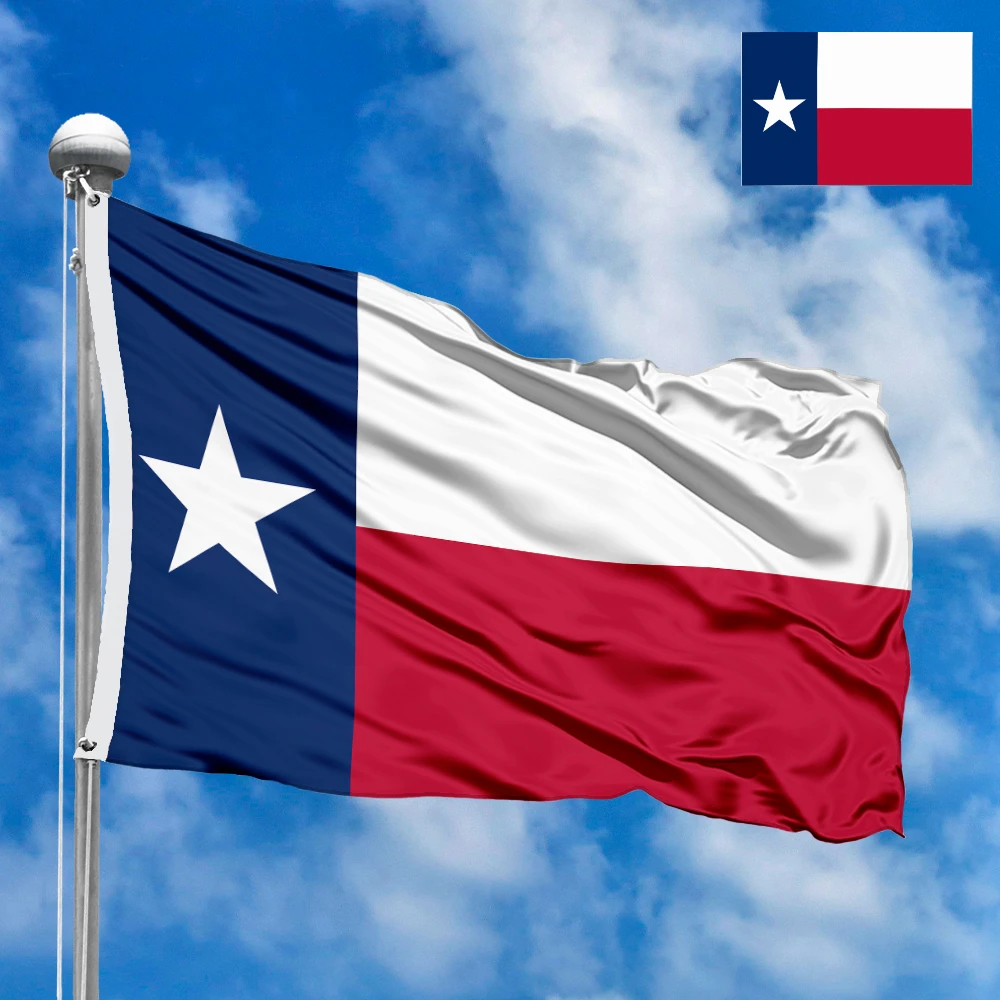The national flag of Malaysia, affectionately known as "Jalur Gemilang" (Stripes of Glory), is a powerful and vibrant symbol that eloquently tells the story of the nation's rich history, diverse cultural tapestry, and aspirations for unity and progress. Adopted in its current form in 1963, following the formation of Malaysia, it beautifully encapsulates the federation of states and the guiding principles of the Malaysian people.
Design and Dimensions
The flag of Malaysia is characterized by a field of 14 alternating horizontal stripes of red and white. There are seven red stripes and seven white stripes, with the top stripe being red and the bottom stripe being white. In the upper hoist canton (the top left quarter), there is a dark blue rectangle that extends down to the eighth stripe. Within this blue canton, a yellow crescent moon and a 14-pointed yellow star are prominently displayed. The standard proportions of the Malaysian flag are 1:2 (height to width), giving it a distinct rectangular shape suitable for various displays.
Symbolism of the Colors and Elements
Every color and element on the Malaysian flag is imbued with specific and significant meaning, reflecting the nation's values and federal structure:
-
14 Red and White Stripes: The 14 alternating red and white stripes represent the equal status of the 13 member states within the federation and the Federal Territories. The stripes symbolize the unity and shared aspirations of all regions.
-
Red: Symbolizes bravery and courage, reflecting the determination of the Malaysian people to face challenges and defend their nation.
-
White: Represents purity and honesty, embodying the integrity and sincerity of the nation's governance and its people.
-
Dark Blue Canton: The dark blue canton in the upper hoist corner signifies the unity of the Malaysian people. It also represents the Federal Government and its role in binding the states together. Blue is traditionally associated with peace and tranquility, reflecting Malaysia's commitment to harmony.
-
Yellow Crescent Moon: The yellow crescent moon is a primary symbol of Islam, the official religion of Malaysia. Its yellow color also indicates it is the royal color, signifying the sovereignty and paramountcy of the Malay Rulers. The crescent signifies the importance of Islamic values and principles in the nation's governance and society.
-
14-Pointed Yellow Star (Bintang Persekutuan): The 14-pointed star, known as the "Federal Star", represents the unity of the 13 states and the Federal Territories. Each point symbolizes one of the federated entities, emphasizing their collective strength and shared destiny within the Malaysian federation. Its yellow color further reinforces its connection to royalty and the constitutional monarchy.
History of Creation and Adoption
The design of the Malaysian flag evolved from the flag of the Federation of Malaya. In 1949, before Malaya's independence, a competition was held to design a new flag for the federation. Mohamed Hamzah, a public works department architect, submitted the winning design. His initial design had 11 stripes and an 11-pointed star, representing the 11 states of the Federation of Malaya.
Upon Malaya gaining independence on August 31, 1957, this flag was officially hoisted. When the Federation of Malaysia was formed on September 16, 1963, with the inclusion of Sabah, Sarawak, and Singapore (Singapore later left the federation in 1965), the flag's design was modified. The number of stripes and points on the star was increased from 11 to 14 to accommodate the new states and the Federal Territories. The name "Jalur Gemilang" (Stripes of Glory) was officially given to the flag on August 31, 1997, by Prime Minister Mahathir Mohamad, further cementing its national identity and pride.
Significance for the Inhabitants
For the people of Malaysia, "Jalur Gemilang" is far more than just a piece of cloth; it is a profound symbol of their national identity, unity, and sovereignty. It represents the harmonious coexistence of diverse ethnic and religious groups under one federal system. The flag embodies the Rukun Negara (National Principles), which are the guiding philosophies of the nation, promoting national unity, democracy, and a liberal approach to culture and tradition.
It instills a deep sense of patriotism and belonging among Malaysians, regardless of their background. Displayed proudly during national celebrations, public holidays, schools, and homes, the flag serves as a constant reminder of the nation's journey towards independence, its achievements, and its collective aspiration for a peaceful, prosperous, and united future. It reflects their shared commitment to a democratic and just society.
Interesting Facts
-
"Jalur Gemilang" Naming: The flag's official name, "Jalur Gemilang" (Stripes of Glory), was given in 1997 to foster a deeper sense of appreciation and pride among Malaysians.
-
Evolution of Stripes: The number of stripes and star points has changed only once – from 11 to 14 – to reflect the formation of Malaysia in 1963, representing the expanded federation.
-
Architectural Origin: The flag was designed by an architect, Mohamed Hamzah, who won a national competition.
-
Royal Connection: The yellow color of the crescent and star is the traditional royal color, signifying the constitutional monarchy and the nine Malay Rulers.
-
Federal Unity: The 14 points of the star represent the 13 states and the Federal Territories, strongly emphasizing the federal structure and unity of Malaysia.
-
Similarities and Distinctions: While sometimes superficially compared to the US flag due to its stripes, the Malaysian flag's symbolism, colors, and canton elements are distinctly unique to its own history, culture, and federal system.
In the demonstration images, full-size flags are shown with proportions of 2:3, and hand-held flags with proportions of 1:2.









 Waving flag
Waving flag
 Sizes:
Sizes:
 Round flag
Round flag
 Sizes:
Sizes:
 Rectangular flag 2:3
Rectangular flag 2:3
 Sizes:
Sizes: